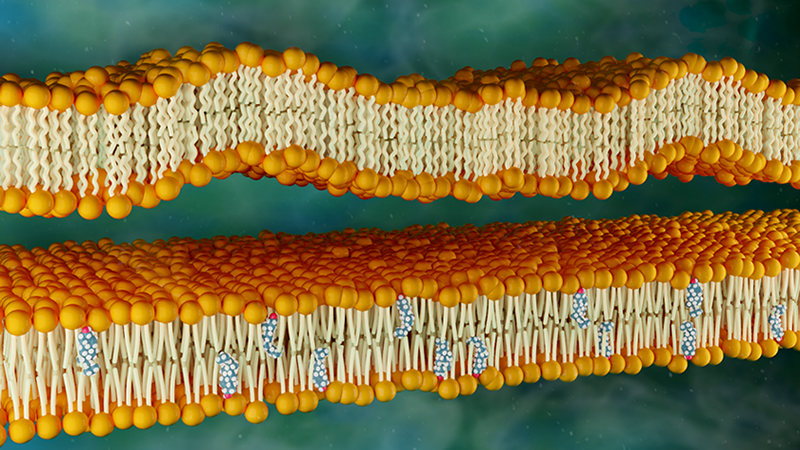September 28, 2020

Neutron scattering at the Department of Energy’s Oak Ridge National Laboratory has shown that cholesterol stiffens simple lipid membranes, a finding that may help us better understand the functioning of human cells.
A team led by Virginia Tech physicist and former ORNL Shull Fellow Rana Ashkar used the Neutron Spin Echo Spectrometer at ORNL’s Spallation Neutron Source to analyze the effect of cholesterol on model unsaturated lipid membranes. Using bilayer membranes with varying amounts of cholesterol, they concluded that cholesterol increases the thickness and stiffness of the membrane.
Their results appear in the Proceedings of the National Academy of Sciences.
“Our study sheds new light on how membrane properties could manifest differently over different length and time scales, a key to understanding complex biological functions that span multiple scales,” Ashkar said.
“We were able to uniquely determine how cholesterol affects membrane stiffness on the nanoscale, over which important biological processes, such as viral budding and membrane-protein interactions, occur.”
The group’s conclusions contradict earlier research conducted using X-rays. The difference in results is likely due to the ability of neutron spin echo to better analyze the membrane’s behavior at relevant length- and timescales.
“We’re measuring dynamics that happen on the order of hundreds of nanoseconds,” said ORNL’s Laura Stingaciu, instrument scientist for the spin echo instrument. “Membrane modulations of any type happen at this scale.”
Stingaciu said neutron spin echo is an especially good technique for analyzing biological samples.
Read more at ornl.gov/news.
Related Publication: Chakraborty, S. et. al. (2020). How Cholesterol Stiffens Unsaturated Lipid Membranes. Proceedings of the National Academy of Sciences, 117, 36. doi.org/10.1073/pnas.2004807117